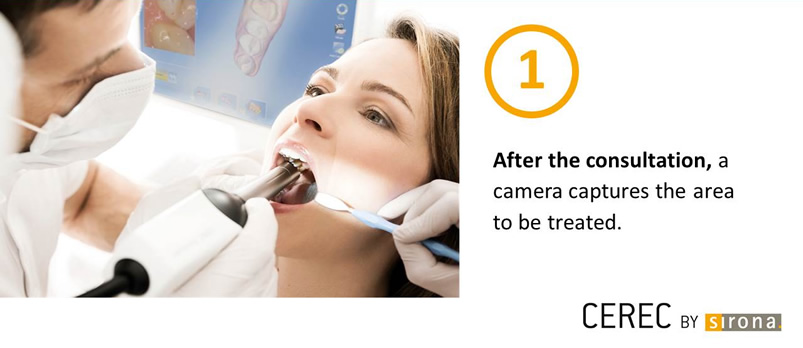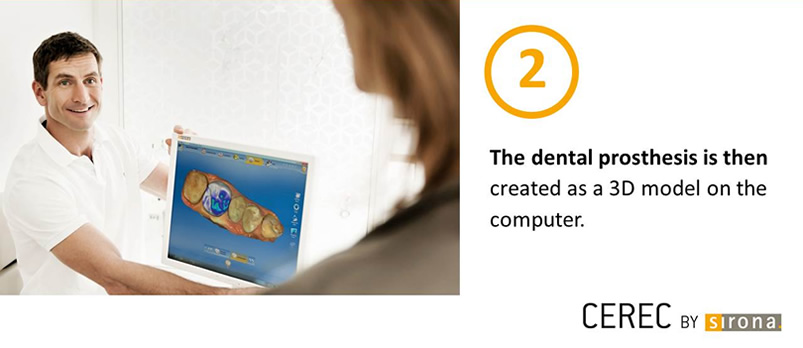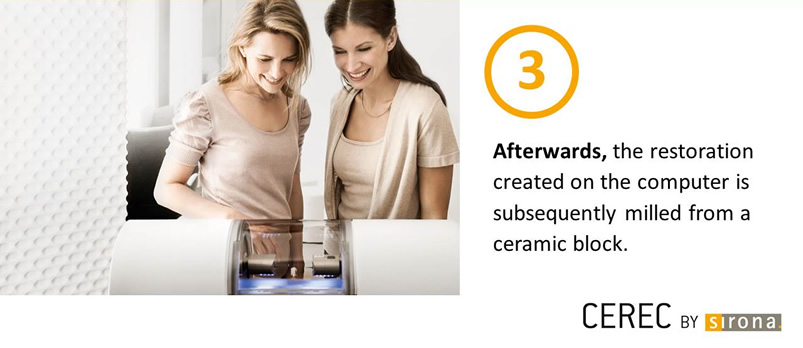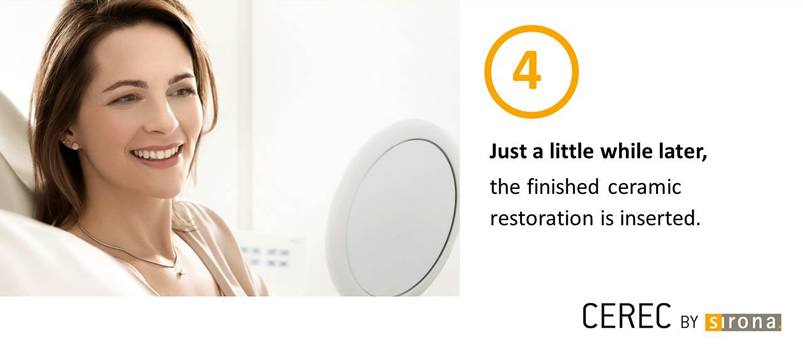Wytheville Dental Crowns
High-tech dentistry - Same day dental crowns

Considering a Same Day Dental Crown?
Wythe Family Dentistry has been replacing tooth decay and badly worn or chipped teeth with dental crowns for years. Same day dental crowns are a new advancement in dental technology that allow our dentists to place your dental crown in just one single visit compared to what would typically be a two visit procedure. Dental crowns are typically recommended when a tooth has decayed too badly on the outside to be replaced with a general filling. In the case of a crown, we would remove the outer surface (decayed area) and “cap” it with a fixed material.
Materials used in crowns can vary from metal based caps to non-metal materials such as resins. Dental bridges are very similar to crowns in both material and procedure. The only difference being that a bridge is typically used to replace an entire tooth, either from tooth loss or decay that is beyond repair.
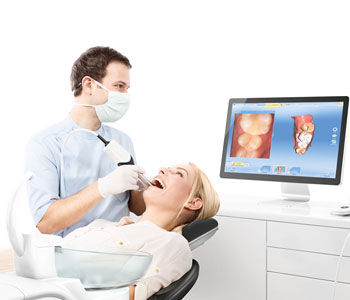
CEREC Same Day Crown by Sirona
Wythe Family Dentistry uses the new CEREC crown restoration system from Sirona. The CEREC system is the latest in dental technology that allows for same day dental crowns. The CEREC milling system enables patients to receive a perfectly fitted in crown in just a few hours. So instead of the typical multi-day visit for the procedure, our dentist can you have you in and out with a new crown in the same day.
“CEREC” stands for Chair-side Economical Restoration of Esthetic Ceramics. The technology uses a CAD/CAM system which incorporates a camera, computer and milling machine all into one system. The process starts with the dentist using a special camera to take accurate impressions of the damaged or decaying tooth. Images are then relayed to a computer system where they will use CAD (Computer Aided Design) technology to design the restoration. The milling machine then uses CAM (Computer Aided Manufacturing) to automatically recreate the restoration while you wait comfortably in the office. The dentist then bonds the newly created restoration to the surface of your old tooth. The entire process is extremely quick!
When to Consider a Crown or Bridge
Most often patients are in need of a crown or replacement when tooth decay has destroyed most of the natural tooth. The crown provides protection for the remainder of the tooth and root structure. Doctors may also recommend the use of a crown after root canal therapy on posterior teeth. Using a crown in these circumstances will help solidify and protect the remaining tooth. Crowns can also be used as a cosmetic option to repair badly chipped and crack teeth or to close space between teeth. Dental crowns for cosmetic purposes are often less expensive than other alternatives.
- To fix a badly decayed tooth
- To repair a badly chipped or fractured tooth
- After root canal therapy (to protect the tooth & root structure)
- To close gaps in teeth (aesthetic purposes)
Composition of Dental Crowns
Metal-alloy crowns – these are typically a mix of gold blend with another metal such as silver, platinum, copper, palladium or tin.
Porcelain-fused-with-metal crowns – these types of crowns are composed of a thinner porcelain wrapping around a metal based that is fused to the remaining tooth. This option gives your dentist a better opportunity to match the outer porcelain to the shade of your surrounding teeth. These offer a more natural look than full metal crowns.
Full metal-free crowns – non-metal crowns are growing to be the most popular, and typically what your dentist will recommend. These are fabricated from materials such as alumina, leucite, zirconia and porcelain. These non-metal crowns are best for a natural appearance and should last the longest.
Typical Crown Procedures
Fitting a dental crown would typically involve a two visit procedure. The first visit usually consists of prepping the tooth. The dentist will remove any remnants of the decayed tooth and file the outer layer down to make room for the crown itself. After the tooth is prepped, the dentist will then take impressions of the tooth and surrounding teeth for the fitting.
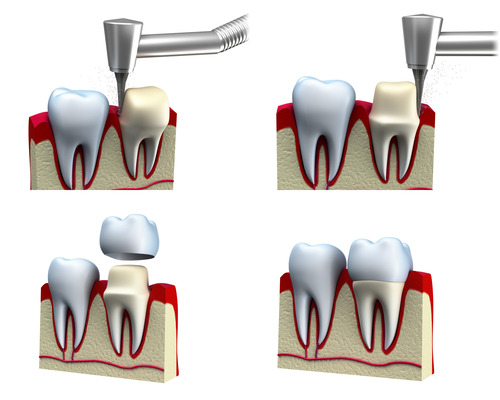
This is then sent off to a dental lab for manufacturing of the permanent crown. A temporary crown will be set in place for the interim until your next visit.
Once the permanent crown is ready to be fitted you will come in for your second visit. At this time the dentist will remove your temporary crown and fasten your permanent crown in with a special adhesive. After the second visit is over, your crown should look, function and feel like a regular tooth!

